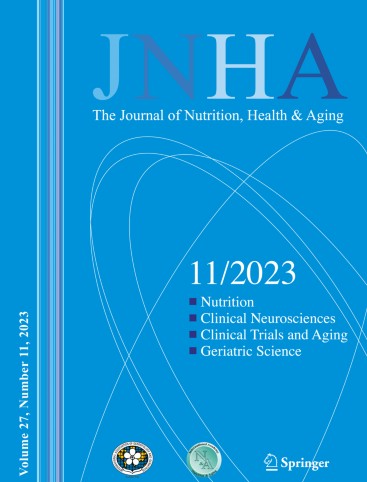Validation of intrinsic capacity and healthy sleep pattern in middle-aged and older adults: a longitudinal Chinese study assessing healthy ageing
IF 4.3
3区 医学
Q1 GERIATRICS & GERONTOLOGY
引用次数: 0
Abstract
Objectives
Intrinsic capacity (IC), a multidimensional construct encompassing mental and physical capacities, has been established in the aging framework by the World Health Organization. However, the detailed relationship between IC and Chinese sleep patterns (nighttime sleep and post-lunch naps) remains inadequately elucidated.
Methods
Participants in this study were individuals aged ≥45 years residing in China, included in the China Health and Retirement Longitudinal Study (CHARLS). We analyzed 4 years of CHARLS data from the first wave (May 2011–March 2012) to the second wave (July 2015–January 2016). Data from these waves were utilized for longitudinal analysis. Self-reported data included nighttime sleep and nap duration, along with other baseline characteristics. The IC evaluation involved physical examinations and blood tests. Initially, linear regression was used to assess the relationship between total sleep duration, nighttime sleep duration, nap duration, and IC change between the two waves that were determined by marginal effects (ME) and their corresponding 95% confidence intervals (CIs). Regression splines were employed to explore potential nonlinear associations. Subgroup and sensitivity analyses were conducted to investigate the heterogeneity of IC change under specific conditions and the robustness of our results. Mediation analysis was performed to identify potential factors mediating the relationship between sleep patterns and IC change.
Results
Both excessive (>10 h) (total, ME: −1.12; 95% CI: −1.61, −0.64; nighttime, ME: −1.44; 95% CI: −2.29, −0.59) and insufficient (<6 h) sleep duration (total, ME: −0.43; 95% CI: −0.68, −0.18; nighttime, ME: −0.50; 95% CI: −0.73, −0.27) negatively impacted IC change. Moderate naps (≤60 min) mitigated the decline in IC change (ME: 0.28; 95% CI: 0.07, 0.49). IC values decreased at the slowest rate when nap time constituted one-seventh of total sleep time. The onset of dyslipidemia partially mediated the association between naps (≤60 min) and IC change (P = 0.02).
Conclusions
These findings suggest that maintaining a healthy sleep pattern of 6−8 h of nighttime or total sleep, along with a post-lunch nap of ≤60 min, helps preserve optimal IC or delay its decline. This is particularly beneficial for cognitive, psychological, and locomotion performance among middle-aged and older adults.
验证中老年人的内在能力和健康睡眠模式:一项评估健康老龄化的中国纵向研究。
目的:内在能力(IC)是一个包含智力和体力的多维结构,已被世界卫生组织纳入老龄化框架。然而,IC 与中国人睡眠模式(夜间睡眠和午后小睡)之间的详细关系仍未得到充分阐明:本研究的参与者为中国健康与退休纵向研究(CHARLS)中年龄≥45岁的中国居民。我们分析了从第一波(2011 年 5 月至 2012 年 3 月)到第二波(2015 年 7 月至 2016 年 1 月)的 4 年 CHARLS 数据。这些波次的数据被用于纵向分析。自我报告的数据包括夜间睡眠和午睡时间,以及其他基线特征。集成电路评估包括体格检查和血液化验。首先,使用线性回归评估总睡眠时间、夜间睡眠时间、午睡时间和两个波次之间的 IC 变化之间的关系,这些关系由边际效应 (ME) 及其相应的 95% 置信区间 (CI) 决定。采用回归样条来探索潜在的非线性关联。为了研究特定条件下 IC 变化的异质性和结果的稳健性,我们进行了分组和敏感性分析。我们还进行了中介分析,以确定睡眠模式与集成电路变化之间关系的潜在中介因素:结果:睡眠时间过长(>10 小时)(总睡眠时间,ME:-1.12;95% CI:-1.61,-0.64;夜间睡眠时间,ME:-1.44;95% CI:-2.29,-0.59)和睡眠时间不足(>10 小时)(总睡眠时间,ME:-1.12;95% CI:-2.29,-0.59)均对 IC 变化有影响:这些研究结果表明,保持健康的睡眠模式,即 6-8 小时的夜间睡眠或全日睡眠,再加上午餐后≤60 分钟的小睡,有助于保持最佳的 IC 状态或延缓其衰退。这对中老年人的认知、心理和运动表现尤其有益。
本文章由计算机程序翻译,如有差异,请以英文原文为准。
求助全文
约1分钟内获得全文
求助全文
来源期刊
CiteScore
7.80
自引率
3.40%
发文量
136
审稿时长
4-8 weeks
期刊介绍:
There is increasing scientific and clinical interest in the interactions of nutrition and health as part of the aging process. This interest is due to the important role that nutrition plays throughout the life span. This role affects the growth and development of the body during childhood, affects the risk of acute and chronic diseases, the maintenance of physiological processes and the biological process of aging. A major aim of "The Journal of Nutrition, Health & Aging" is to contribute to the improvement of knowledge regarding the relationships between nutrition and the aging process from birth to old age.

 求助内容:
求助内容: 应助结果提醒方式:
应助结果提醒方式:


